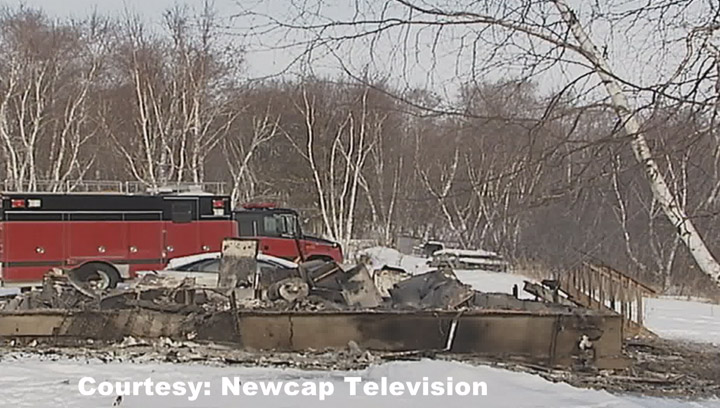Chief Frank Abraham remembers how impotent he felt as he watched a fire reduce a family’s home to ash last month.

No firefighters came to douse the flames: There were none to come.
The Black River First Nation, about 138 kilometres east of Winnipeg, has its own fire truck but it’s had “some difficulties,” Abraham said.
The inferno was a huge blow to the community: The gutted house will cost $140,000 to rebuild.
But it could have been so much worse.
It has been gut-wrenchingly worse, in the past few weeks, for young children trapped in burning homes in tiny communities across Canada – a house fire on a Saskatchewan reserve killed two toddlers; four children died in a house fire in rural Manitoba; two small bodies were pulled from the charred remains of a home in Gracefield, Quebec.
In tiny, remote communities across Canada, there are places where, in 2015, you can dial 911 to report a fire and nobody comes.
And the more remote you are, the worse it gets, says Paul Boissenault, the president of the Canadian Association of Fire Chiefs.
“Rural communities present a significant challenge because, in many cases, there’s very delayed response times with the more rural that you get,” he said.

Get weekly health news
In Black River’s case, they’re far enough away from other communities that they can’t rely on neighbouring communities for assistance: When every second counts, it’s too risky to wait.
“That happened when we lost our band office” in a 2006 fire, he said.
“By the time they got there, the building was smouldered to the ground.”
That need for self-sufficiency makes it especially important for reserves to rely on their own fire department.
But with their only fire truck out of service and almost no useable equipment, Abraham would hardly call their firefighting capacity reliable.
“I would say that close to 90 per cent of our First Nations communities share that same problem,” he said.
“We’re inadequately funded to address emergencies in our communities.”
Aboriginal Affairs and Northern Development Canada gives First Nations communities $26.3 million a year for fire protection and infrastructure.
But Abraham said the amount they get is not enough to even maintain the reserve’s 20-year-old equipment, purchased out of residents’ own pockets after someone died in a fire.
“We’re supposed to build three houses out of $250,000,” he said, citing their operational budget. “We’re supposed to build roads and bridges with that $250,000 … we’re supposed to operate our fire department with that and they don’t even give you the funding to maintain the fire truck in the first place. …
“There is a big problem about how the government funds first nations overall, in general,” he said. “It’s not just the fire department, it’s the operation and maintenance of all programs.”
And training? Nonexistent, Abraham said.
Boissenault argues building regulations and fire education also suffer.
“When you have a small community, just creating an infrastructure is not the full picture,” he said. “There’s a necessity of building code and fire code regulation, there’s a necessity for fire prevention and distribution of public education material and, once a fire department is established, best practice training and viable emergency response. It’s very challenging in many communities.”
Part of the problem is of bodies: With so few people in a community where people are already struggling, how do you pull together enough volunteers for a fire department?
“Ensuring that you have a viable number of responders to deal with the emergency becomes very challenging,” Boissenault said.
Black River’s fire department has no volunteers. Not for lack of trying – “We have a whole list of them,” Abraham said.
But there’s nothing for them to volunteer to work with.
“It’d cost us $40,000 to fully equip our volunteer firefighting department.”
The federal Aboriginal Affairs Minister’s office said in a statement they’ve been working with other First Nations through education programs. Abraham said that the reserve has an excellent program on fire prevention, but that things can still go wrong and they don’t have anything in place to solve an emergency.
With no fire truck, no volunteers and no help on the way from elsewhere, the only thing the Black River First Nation and dozens of similar communities can do save up to pay for the equipment themselves and hope nothing catches fire in the meantime.


Comments